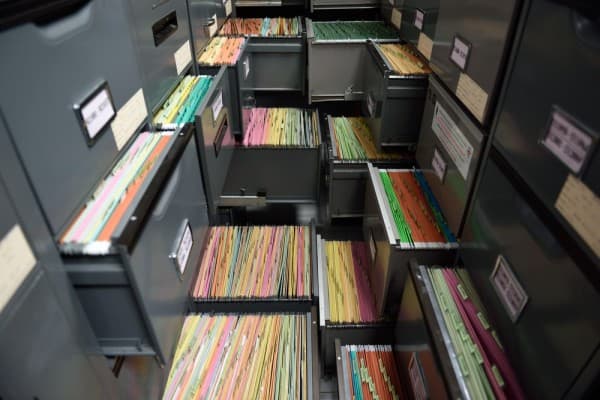No matter what business you’re in, you will be generating paperwork. Some of that paperwork could be destroyed as soon as it is used, but others will need to be kept. Some paperwork even needs to be kept for over 6 years for HMRC, so it’s important for you to understand where that paperwork is, and how you would find it if you needed to. For that, you need to archive. There are 3 main options for archiving documents within your business, each with its own benefits and drawbacks.
Filing Cabinets
An old favourite, the traditional filing cabinet is still used by thousands of businesses across the world. A big metal box with drawers fitted with dividers where you can dump documents in case you need them again. Some filing cabinets are very well organised, and some are not. It’s all down to the person who does the archiving. We have visited some companies who can take up to an hour to locate a single document within their filing cabinet because they have ‘let their archiving go a bit’. An average 5 drawer filing cabinet can store up to 21,875 pieces of paper. The average 250 person business would need 114 of these to store every piece of paper they produce, so while it might seem like a lot of storage, it does have its limits. It also costs you money in office space – you are paying £55 per square foot for your office (the average in London), then a single filing cabinet costs around £390 a month. Of course they have their advantages as well – they can be very easy to navigate if maintained properly and allows you to keep comprehensive paper records.
Boxes
Record boxes are always an interesting topic – because their effectiveness varies wildly depending on who is using them. Some businesses simply finish their end of year accounts, and then dump all of the related paperwork into an archive box, label it with the year and put it away, only to be seen in case of audit. Others use them to organise their client files or as a way of separating out information. Storage of awkward and messy paperwork like receipts is often done in archive boxes, as this is the easiest way to keep them all in one place. The downside to archive boxes is that there is no system within the boxes – no way of easily identifying the document you need without going through them all. So if you don’t think you will need the paperwork again, then archive boxes are a good way to go. Though you’ve got to ask yourself, if you aren’t planning on using them ever again, why are you keeping them?
Digitally
Digital archiving is soaring in popularity at the moment, and it’s hardly surprising. New products and methods are being developed all the time, tailored to the specific needs of different industries and businesses. Digital archiving eliminates your reliance on paper by storing all documents in a central repository, digitally. You will need to scan in any paper documentation (which at the beginning can be a bit of a chore), but from there the software can scan the essential information and file it away under your pre-set parameters. You can tag certain file types to go to certain places, or label them so that you can easily search and retrieve within seconds. It’s a simple system to maintain and not only removes the paper storage from your business’s but provides a safe and secure backup for all of your data. It’s 2 solutions in 1.
Whichever method you choose to archive your paperwork, the important thing is to have a system in place for identifying and storing documents. The specifics of that system will change depending on your industry and your individual business needs, but an overarching idea of where your paperwork is and how to find it is crucial. Without a system, your business might as well be storing everything scrunched up in a shoebox. For more information on your archiving options or to get some help archiving in your business, get in touch with us today.


Recent Comments